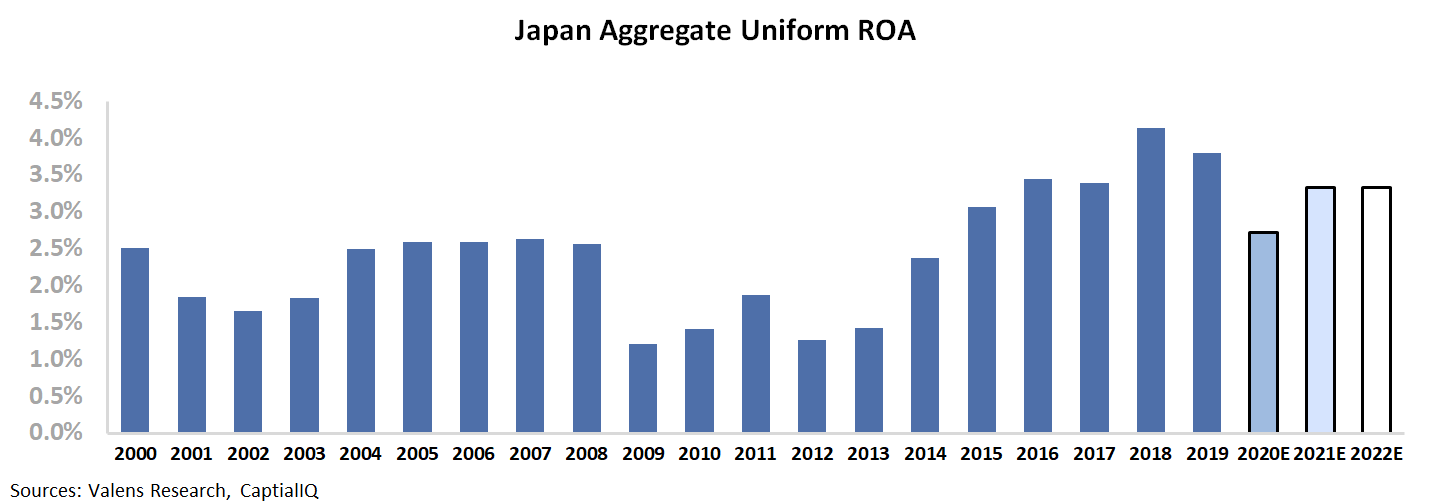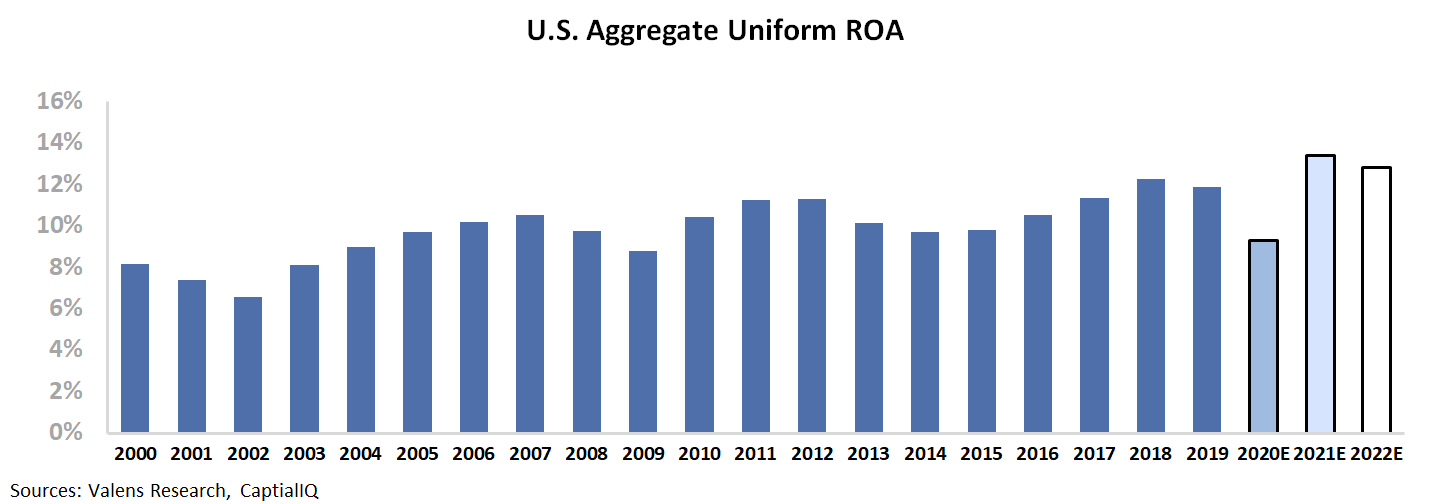It may almost be Halloween, but that doesn’t mean you need to be afraid of a “zombie company” apocalypse

Investors are worried about rising corporate reliance on debt. As aggregate debt levels rise, some are concerned it could lead to more “zombie” firms in the US.
Today, with the help of Uniform Accounting, we take a look at how much of a risk “zombie” firms really pose to the economy.
Investor Essentials Daily:
The Monday Macro Report
Powered by Valens Research
An ideal capitalist system creates losers and winners from market forces.
The “invisible hand” should promote smart and intuitive business to thrive and push unsuccessful companies out of existence. However, as Japan shows, this does not always happen in practice.
1991 marked the beginning of a “lost decade” for Japan when the central bank raised interest rates in an effort to curb speculation and inflation.
To this day, the country’s stock market index, the Nikkei 225, has yet to surpass its all-time highs last reached in the 1990s.
After the initial crash, “zombie firms” were a big reason growth never recovered. Zombie firms are companies that should have already gone bankrupt but that continue to operate due to easy access to liquidity.
Now, some economists and investors are nervous about the same thing happening in the US.
The question now is, will the US see its own lost decade?
Two ingredients are needed to create zombie firms: low interest rates and easy access to credit.
Currently, interest rates are at all-time lows. The Federal Reserve lowered interest rates when the coronavirus pandemic began. This was to allow firms to borrow money during the downturn.
The Fed also implemented the Main Street Lending Program. This program gives five-year loans out to small and medium sized businesses who were in a sound fiscal position prior to the pandemic. Additionally, the Paycheck Protection Program was a similar program put on by the Federal Government.
The priority of this easy access to credit has been to keep people employed and businesses open. The repayment of the loans is a secondary concern.
In a normal economy, that is not how lending should work. Creditors should not give loans just to keep companies open if they cannot survive. After all, the first rule of lending is “lend to borrowers who don’t need your money.”
Experts are starting to worry about aggregate debt levels. Over the past ten years, debt levels have been rising. The recent surge in lending over the past 6+ months has only accelerated concerns.
However, only looking at total debt levels paints an incomplete picture. As we have discussed before, it is important to look at companies’ ability to pay off debt along with the total amount of debt.
Companies have a lot of debt right now. With low costs to borrow, some of these over-levered zombie companies will continue to survive. Our aggregate recovery rate chart shows some worrying signs that confirm this.
Recovery rate represents a company’s ability to pay back debt by liquidating assets. Aggregate corporate recovery rates are currently at their lowest levels since 2002 and have been falling since 2012. This means either asset values are declining, or total debt relative to assets is going up.
In this case, it appears the latter is the bigger contributor. In other words, companies are relying on debt to survive more than ever.
No wonder some economists are sounding the alarm for a zombie company invasion. However, those saying the US is following in Japan’s footsteps are missing the whole picture.
Low interest rates and easy access to credit are the two biggest contributors to zombie companies. They are necessary. However, those two data points alone are not sufficient to create a country of zombies. A country also needs other issues that are stifling creative destruction.
For decades, Japanese firms have been unable to drive profitability above the cost-of-capital. Aggregate Uniform ROA in Japan has hovered between 1% and 4% since 2000.
Japan’s lackluster profitability levels stand in stark contrast to the US, and this hints at the other factor that helped contribute to Japan’s zombies.
Corporate culture differs in Japan and the US.
The keiretsu, the big conglomerates that dominate Japan Inc., have a specific purpose in Japanese culture. They are as much the welfare state for their employees as they are profit-making firms. The government and banks are unwilling to force them to make tough decisions.
Also, the keiretsu have complex holding structures. Different firms all own shares in each other, in convoluted cross holdings. This makes it harder for takeovers to occur, and for outsiders to push companies to evolve.
Some of this has changed in the past 8 years since Shinzo Abe started pushing Abenomics in 2012 after his election. He sought to help facilitate creative destruction in Japan Inc. and to bring in outside voices. Unsurprisingly, this led to Uniform ROA rising to 20-year highs in 2018-2019.
Here in America, those cultural issues are not a problem. Corporate profitability shows as much.
Corporate averages for ROA are roughly four times higher than Japan’s average. Even more important, profitability levels have been steadily rising.
Aggregate ROA was as low as 7% at the beginning of the century. Last year it was at 12%.
It is easy to see rising debt levels and falling recovery rates and signal the alarm. However, taking a closer look using Uniform Accounting shows there are major differences between Japan during its lost decade and the US today.
American firms have sustained large, improving profitability. Worries regarding the increased reliance on debt financing are valid. However, the concern of a financial zombie apocalypse is overblown.
Best regards,
Joel Litman & Rob Spivey
Chief Investment Strategist &
Director of Research
at Valens Research







